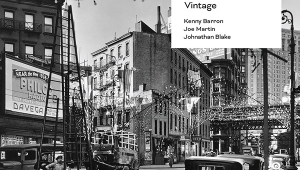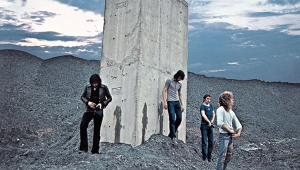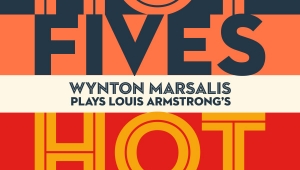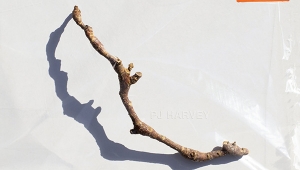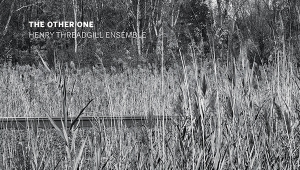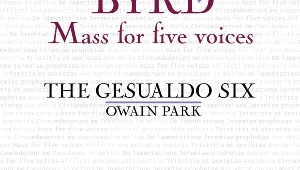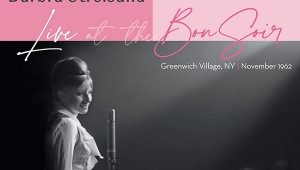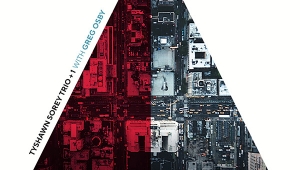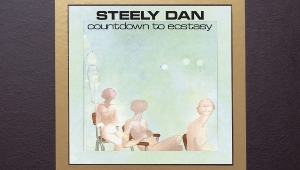| Columns Retired Columns & Blogs |
Recording of June 1987: Copland: Appalachian Spring, etc.
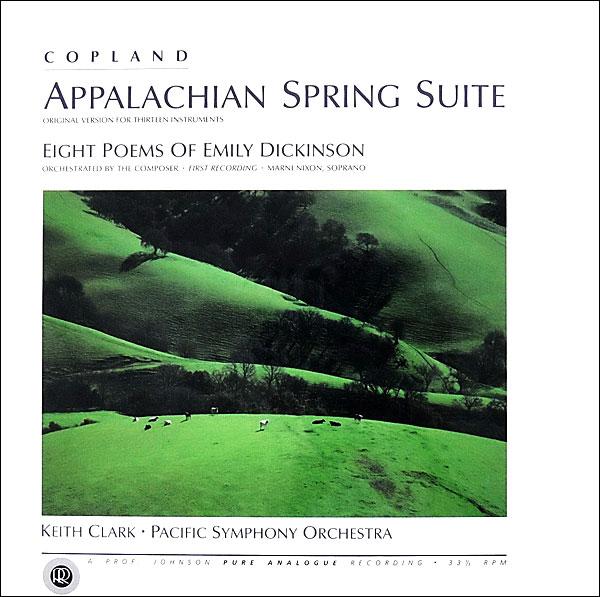
Copland: Appalachian Spring (Suite), Eight Poems of Emily Dickinson, An Outdoor Overture (CD only)
Pacific Symphony Orchestra/Clark/Marni Nixon (soprano)
Reference Recordings LP RR-2 and CD RR-22CD. Tam Henderson, prod.; Keith Johnson, eng.
Pacific Symphony Orchestra/Clark/Marni Nixon (soprano)
Reference Recordings LP RR-2 and CD RR-22CD. Tam Henderson, prod.; Keith Johnson, eng.
This is unquestionably one of the best recordings Reference Recordings has done. The sound of the LP is up-front and quite bright, giving the orchestra that peculiarly nasal quality I usually associate with small French orchestras. There is truly remarkable detail and naturalness here; I was about to write that the recording makes the orchestra sound very small and pinched in Appalachian Spring when I noticed on the record jacket that this is the "Original version for 13 instruments." Okay, so I know what it costs to hire musicians in the US, but I still prefer the version of this work scored for full, bombastic, overblown 108-piece symphony orchestra. The 13 instruments are superbly balanced, though—even the piano, which is usually (and wrongfully) relegated to behind the orchestra. About a half a block behind it.
Soundstaging is generally realistic, in view of the size of the performing group, but a relative lack of depth in Appalachian Spring suggests that Prof. Keith Johnson may have used several more microphones than the mandatory two. There is not, however, any other evidence of the miking having been anything more than minimal, and there is nice depth on the vocal works.
Forwardness or not, the analog disc is one of the most sumptuously rich, liquidly transparent recordings I've heard. There isn't a trace of spurious texturing; every instrument has exactly the right timbre for its apparent distance, and the sound is so effortlessly smooth that there is absolutely nothing to remind one that a little piece of diamond is tracing an incredibly complex pattern along the path of a groove in a vinyl surface. There is nothing remotely mechanical about the sound.
Unfortunately, the performance of Appalachian Spring is positively somnolent. It isn't so much that the tempi are ploddingly slow; mainly, I think, it's the phrasing. During the fast passages in particular, notes are sustained too long, and are not cut abruptly enough at the end. The performance has undeniable charm and a nice feeling of sweetness, but Copland's music was never all that sweetsy-poo. I found it all rather unexciting.
I've never been a fan of Emily Dickinson's preciously effete poetry, and Aaron Copland's 1950 settings didn't exactly hit me either, although it was nice not to be able understand the words much of the time. The frequent unintelligibility of the lyrics is no fault of the recording, in which Keith Johnson obviously opted for a concert balance and perspective rather than trying to spotlight Ms. Nixon as on a pop recording. (The orchestra is farther back than on Spring, with Ms. Nixon directly in front and to right of center.) Neither, I suspect, is the unintelligibility entirely Ms. Nixon's fault, although she does tend to under-enunciate here. To judge from this never-before recorded work, Copland apparently knew a lot more about orchestration than he knew about setting words to music: the songs sound like SOBs to sing, with impossible-sounding coloratura pitch jumps and many awkwardly pitched vowels. (See how high you can sing "ooo"!) But then, these songs are just not my cup of tea anyway, so I shall comment no further.
There's an edit splice on the LP, right at the beginning of the Emily Dickinsons and just before Ms. Nixon's entry, that is so bad I did a double-take when I first heard it. The tail-end of a note is lopped off, along with all its reverb. Keith doesn't usually let things like that get by; I can only assume there was a good reason why he had to pass this one. (The digital master for the CD was apparently edited at the same point, but it's a cleaner edit; the only thing giving it away is that the slight reverb from the end of that note doesn't carry over past the splice. Had I not been looking for it on the CD, I probably wouldn't have noticed.)
Ah, but what about the CD? I know all you digiphobes out there are just itching for me to get around to reporting that the CD version of this is just as bad as the CD version of Church Windows, if not much worse. Well, I have bad news for you, and good news for CD enthusiasts. The CD of this Copland is amazingly like the LP—a first for RR, whose previous parallel releases have sometimes suggested a desire on the company's part to demonstrate how mediocre CDs can be. These, though, are so similar in sound that neither Dick Olsher nor I could consistently pick which was which in single-blind listening tests. (And the surfaces on the LP are so quiet, they didn't help the identification either, except during the quietest passages.) Dick kept insisting that he preferred the sound of the LP, but he miscalled his shots so often I had to put that down to a bit of prejudice. I freely admit I could not tell them apart often enough to be able to express a preference for one or the other.
Now, as a lame excuse for this obvious failing on our part—everyone knows LPs sound marvellous while you can't even recognize the tune from a CD!—I must say that my reference system does not exaggerate grundge in the program material, either via amplifying distortion or loudspeaker peaks, and that systems which do might well reveal a clearcut difference here. I should also add that my present cartridge, an Ortofon MC-2000, which—interestingly—some reviewers have described as sounding "brash," was chosen as my reference specifically because, among other things, its spectral balance makes LPs sound more like their CD counterparts than any other cartridge I've tried to date. The rest of the system was then chosen to make both sound as much like real music as possible. I can almost assure you that, if you have not made a similar effort to match your CD and analog signal sources, you will not find RR's Copland CD to be even similar to the LP. But then, that's not my responsibility, is it?
What makes the similarity of CD and LP sound even more remarkable is the fact that they were cut from different master tapes: two digital, the other analog. The analog recorder was, of course, Prof. J's home-brew unit. But amazingly, the digital recorder used for Appalachian Spring was Nakamichi's DMP-100—a souped-up Sony PCM-F1, costing under $2000! I have not heard a better CD made from $30,000 PCM systems! The digital encoder for the Poems was an Audio & Design 701ES.
The CD, by the way, comes with a bonus filler—An Outdoor Overture—which, as far as I'm concerned, is the best piece on the disc. Scored for (and played by) full orchestra, and recorded in the same locale as Spring, it was mastered on Keith's analog tape machine. The performance is the most animated of the lot, but aside from that, it's a great opportunity to compare analog and digitally mastered recordings as side-by-side as you are likely to hear them. Great bass drum, too. Shades of Telarc!
Considering the gorgeous sound on both of these, I regret that I cannot be more positive about their musical qualities. But performance aside, it is clear that these parallel releases represent a minor breakthrough of sorts in CD and LP sound quality, even for a company that has shared preeminence in that area in recent years with few other firms. If Reference Recordings can get this kind of sound on their next release, along with a more musically satisfying performance, they may have the audiophile-record field to themselves. Until someone else does it better.—J. Gordon Holt
- Log in or register to post comments



